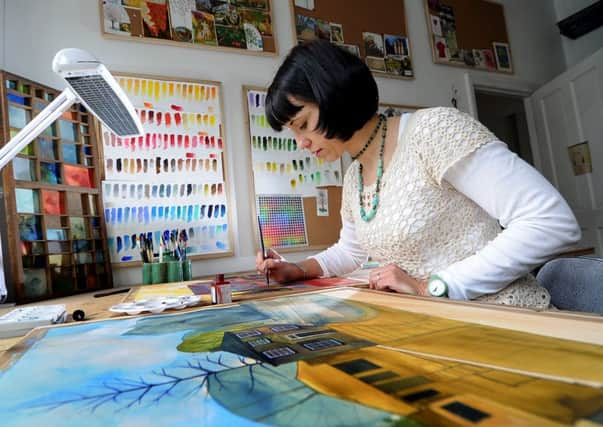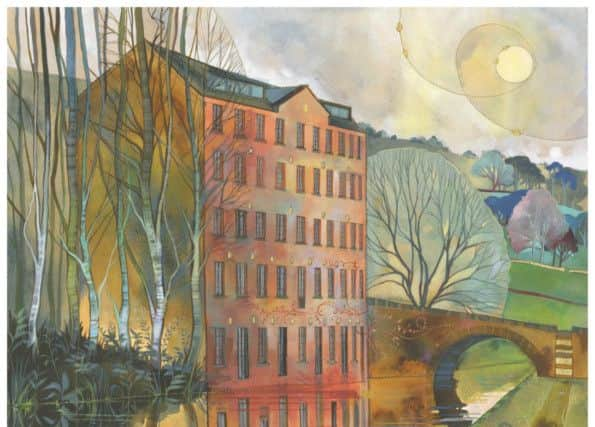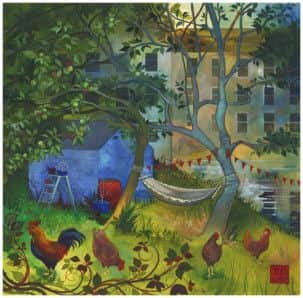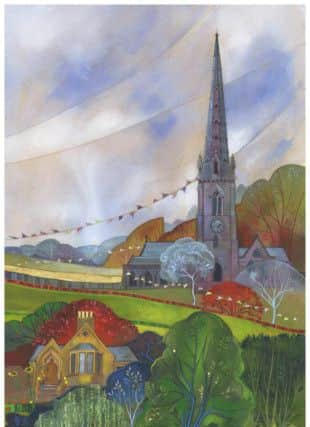Hue goes there?


There’s no doubt that Hebden Bridge is a vibrant town that has been variously dubbed “the fourth funkiest place on the planet” and “the coolest place to live in Britain”. There’s always something going on, from gigs at Trades Clubs to Kundalini yoga, gong baths and alternative therapies.
But few would describe it as colourful in the literal sense, under grey skies, blackened stone terraces and bleak weather-beaten moorland.
Advertisement
Hide AdAdvertisement
Hide AdYet Kate Lycett can still see vivid hues all around. “The hillside is dirty green but I can see Prussian blue at the bottom of a tree and bright oranges in the ferns,” she says, and she is right it is there if you look hard enough and use a bit of imagination.


Her ability to see colour and to exaggerate its intensity, from sludge to emerald and brown to rich russet, is part of what makes her paintings so successful. The colours in her work are not contrived, but are based in reality and that veracity is powerful, especially to those who know and love this valley.
Kate’s latest pictures of her home town and the surrounding area are set to feature in a new exhibition Water and Light at Hebden’s Heart Gallery. The title was inspired by her regular running route between the canal and the river.
“I have three small children so I can’t go anywhere at speed and that’s one of the reasons I love to run,” she says.
Advertisement
Hide AdAdvertisement
Hide Ad“I like that route because there’s a contrast between the canal, which is still and reflective, and the river, which is fast-flowing,” she says.


The paintings feature various locations in the Calder Valley, including Heptonstall, Honey Hole and the allotments she runs past.
“There are chickens on the allotments and I love looking at them. They’re so colourful so I’ve gone a bit crazy with chickens in the pictures this time. They pop up all over,” says Kate, who is happy to be back on home soil for her latest show.
“My last exhibition was of North Yorkshire and the colours there are more subdued and the water is more still.
Advertisement
Hide AdAdvertisement
Hide Ad“It’s beautiful but I prefer the wild landscape here and I like the fast-changing light that leaves you in the gloom one moment and in luminous, saturated colour the next.


“I also love how the buildings stack up into the hills in Hebden with under dwellings and over dwellings.”
Buildings feature heavily in her work and her interest in them came from her grandfather, an architect, who taught her how to draw and paint.
“When I was eight he bought me a drawing board and a set square and taught me the rules of perspective and how to do architectural plans,” says Kate, who was brought up in Suffolk before moving to York to study a degree in fine art
Advertisement
Hide AdAdvertisement
Hide AdShe later worked as a textile designer but started painting again when she moved to Hebden Bridge in 2005.
It was a direct response to the dramatic landscape, which is so different to her native Suffolk, where the light is grey and cold, the skies enormous and the horizons low. The area is so flat she recalls having to travel 11 miles to practice a hill start when she was learning to drive.
She credits her career in textiles for her exuberant use of colour and pattern and confesses to being “a floozy” when it comes to materials.
She uses everything from inks and watercolours to acrylic, gouache, thread and gold leaf.
Advertisement
Hide AdAdvertisement
Hide AdAs her inks take time to dry she often works on four or five pictures at once and juggles time in her studio with childcare and researching her next project.
Her next body of work will be The Lost Houses and will focus on properties in the area that are ruined or have disappeared.
“It’s fascinating and I am really enjoying the research and stories. New Cragg Hall is a good example. It’s an Arts and Crafts mansion that burnt down in mysterious circumstances in 1911 but not before the owner had removed all his belongings.
“People think it has gone but the house built on its footprint has the old Rapunzel towers hidden in the garden and you can see the remains of the fountain,” she says.
Advertisement
Hide AdAdvertisement
Hide AdAnother house she plans to revive on canvas is Norland Hall, which was struck by lightning and fell in disrepair. The 17th century building was dismantled and the stone eventually sold to American newspaper magnate William Randolph Hearst in 1922.
He shipped it over to San Francisco but his plan to recreate the hall in California came to nothing and the stone was used to build a chapel.
“I am planning to paint 12 of these houses, so I’m busy looking in archives and libraries to find information and pictures,” says Kate.
“The idea is to recreate them with some artistic licence, in colour, and full of life.”
• Water and Light by Kate Lycett is at Heart Gallery, Market Street, Hebden Bridge, from March 26. It includes originals and prints, 01422 845845, www.katelycett.co.uk; www.heartgallery.co.uk